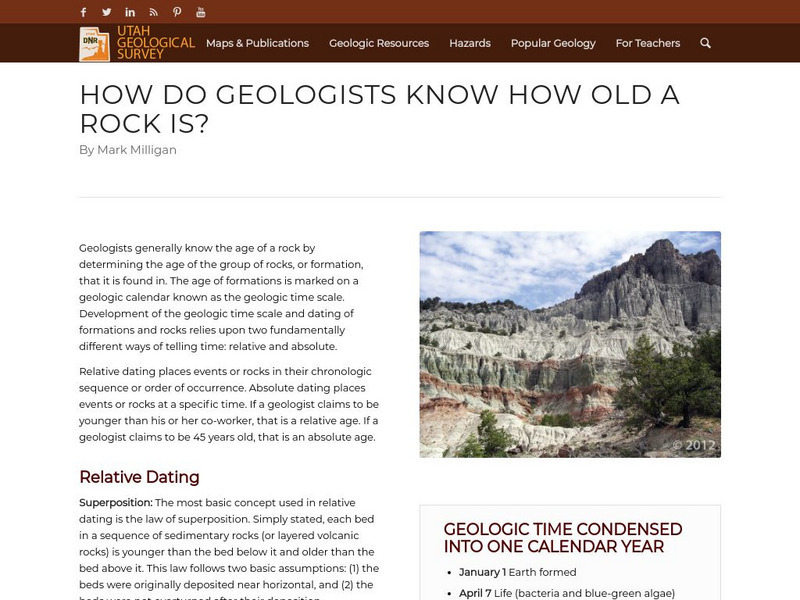Curated by
ACT
Geologists generally know the age of a rock by determining the age of the group of rocks, or formation, that it is found in. The age of formations is marked on a geologic calendar known as the geologic time scale. Development of the geologic time scale and dating of formations and rocks relies upon two fundamentally different ways of telling time: relative and absolute.
3 Views
3 Downloads
Concepts
Additional Tags
absolute dating, cross-cutting relationships, geologic time, inclusions, radiometric dating, superposition, ohio pg.eh.1.d, utah geological survey, utah geological survey: how do geologists know how old a rock is?, utah geological survey: how do geologists know how old a rock is?/ohio pg.eh.1.d, combining relative and absolute age data, crosscutting relationships, faunal succession, fossil dating
Classroom Considerations
- Knovation Readability Score: 5 (1 low difficulty, 5 high difficulty)
- The intended use for this resource is Instructional

